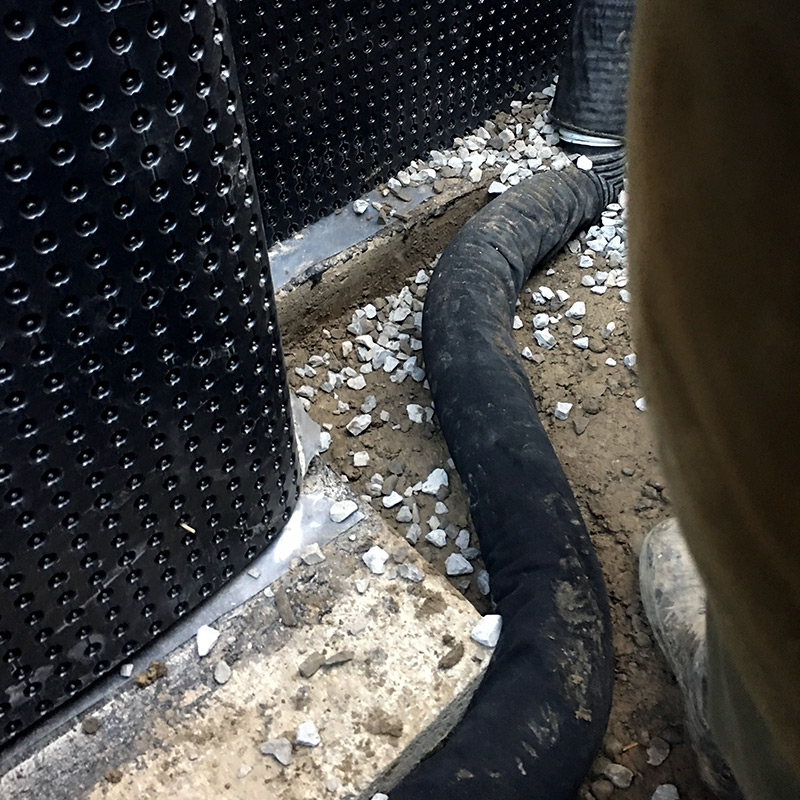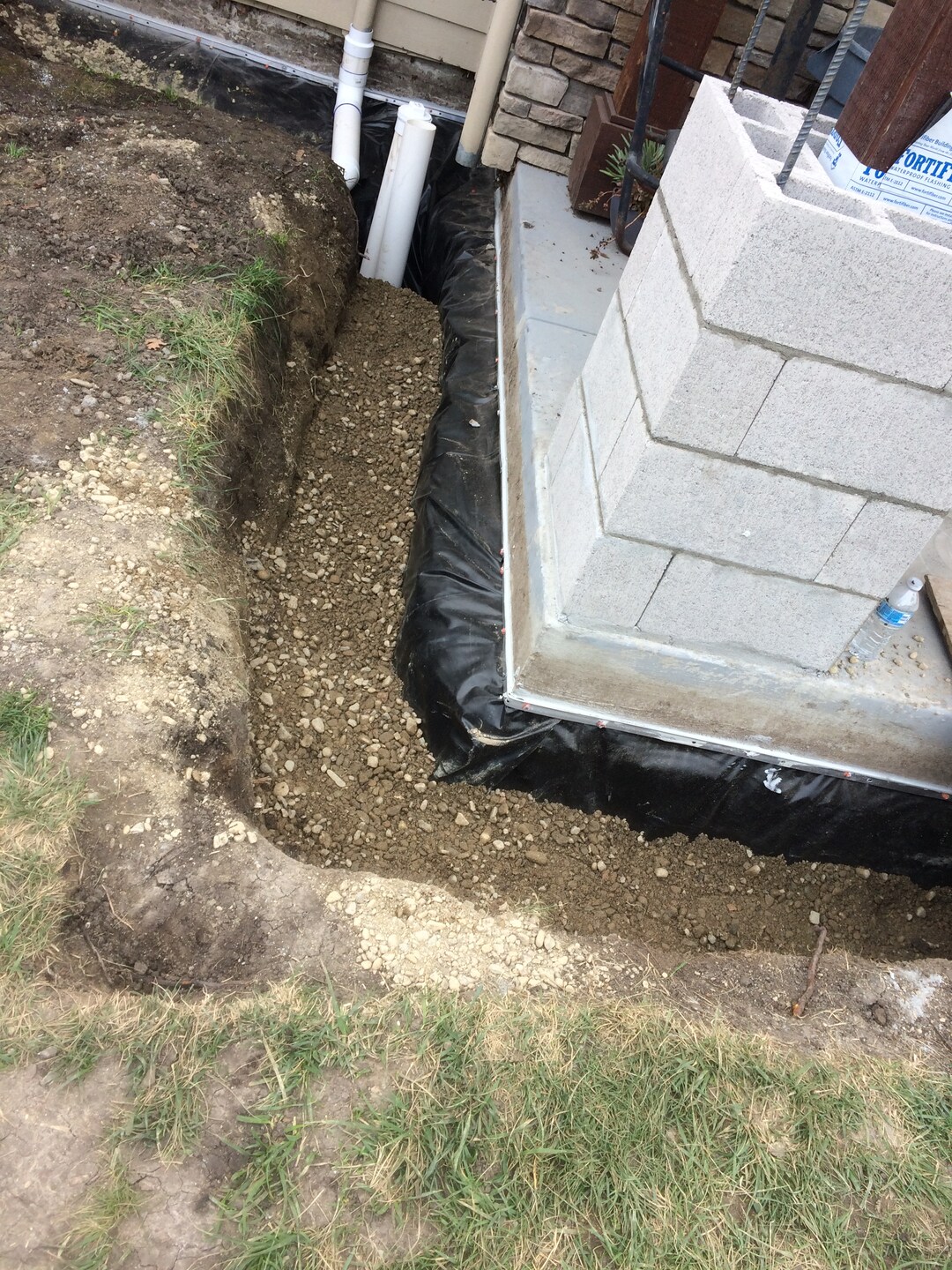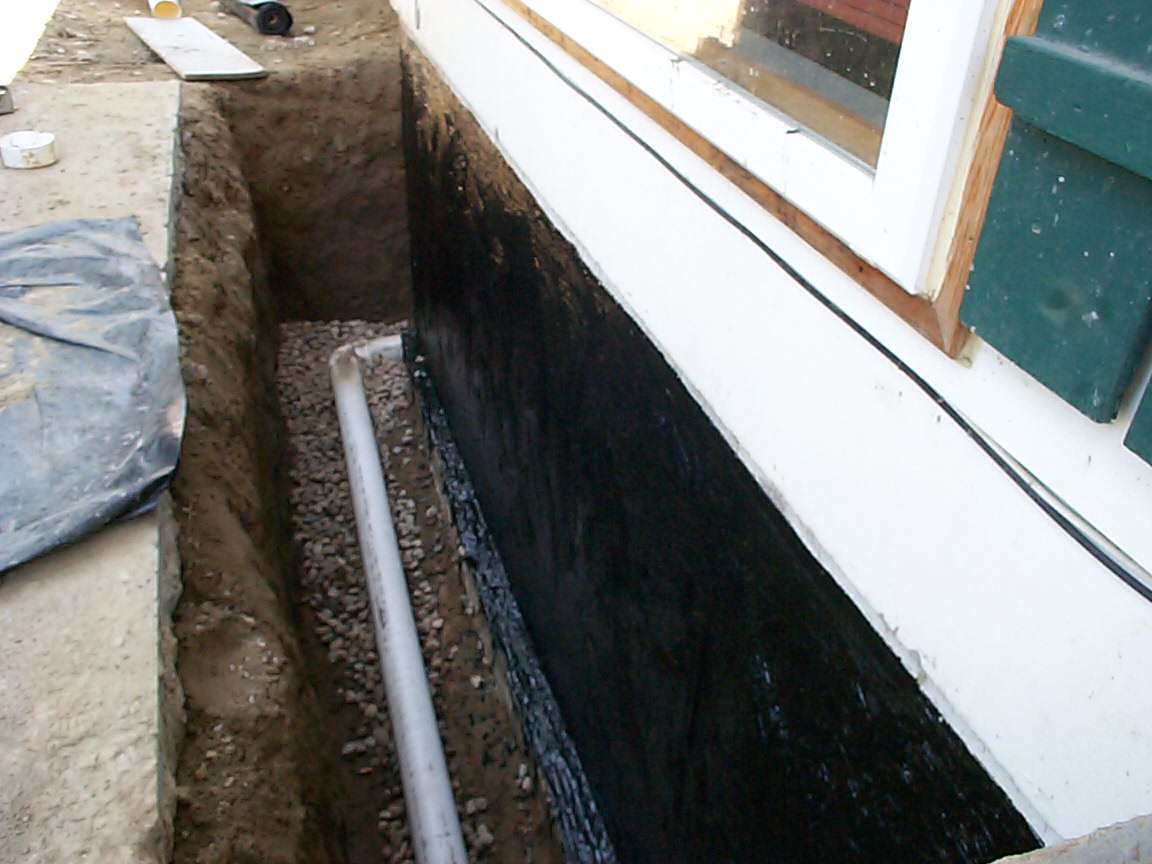Footing Drain Servicesin Sterling Heights MI
Footing Drains to Ensure Solid and Dry Foundations
We Are Locally Owned & Operated For Over 37 Years
Contact Us Today!
We Serve Businesses In And Around The Following Cities:
About Footing Drain Services
Introduction: The Undeniable Importance of Footing Drain
For commercial properties, especially those located in Sterling Heights, footing drain systems are vital infrastructure components. Buildings in this region often experience rain showers and snowstorms, which can result in water accumulation around the structure. Thus, installing an efficient and reliable footing drain system becomes crucial to prevent any drainage-related issues that could negatively impact the structural integrity of the property. This comprehensive guide will delve deeper into the different aspects of footing drain systems, highlighting their importance in maintaining a healthy and successful commercial property.
Understanding Footing Drain
A footing drain, often known as a foundation drain, is a simple yet efficient drainage system installed around the perimeter of a building. Its primary purpose is to prevent water from accumulating around the foundation by directing it away from the building. This reduces the risk of moisture leakage into the basement, which can lead to severe problems such as water damage and mold growth. When properly installed and maintained by professionals such as D&J Contracting, footing drains can provide long-lasting protection to your commercial property.
The Process of Installing Footing Drains
The process of installing a footing drain involves several steps and requires specialized expertise to avoid potential issues down the line. Initial stages include excavating around the property’s foundation, creating a trench, and installing drainage pipes. Once the footing drain is in place, gravel is added for better water distribution. The trench is then backfilled with soil, and the surface is restored. While this process may sound straightforward, it’s worth noting that each step needs careful execution. Mistakes can create unnecessary complications and additional expenses. Thus, it’s recommended to seek professional help from experienced service providers like D&J Contracting to execute the task effectively and efficiently.
Benefits of a Properly Installed Footing Drain System
Evidently, one of the main benefits of an efficiently-working footing drain is the prevention of water accumulation around the foundation of the building. However, it offers more than just diverting water. A well-structured foot drain system can enhance the longevity of a building, reduce maintenance costs, and prevent possible structural damage. Moreover, it provides a healthier environment inside your commercial property by preventing mold growth and dampness. Having a reliable footing drain system installed by a reputable company like D&J Contracting ensures your commercial property will remain safe and habitable for many years.
Real-World Applications and Examples
A footing drain system might seem like an unimportant component of a structure, but real-world applications prove the contrary. For instance, let’s consider a retail store located in Sterling Heights that faced severe basement flooding during heavy rainfalls. It affected store operations and even resulted in temporary shutdowns. After implementing a well-designed footing drain system, the issue was resolved and the store hasn’t faced any flooding problems since. This not only ensured an unwavering business operation but also prevented additional repair or renovation costs that could have resulted due to prolonged water damage.
Footing Drain Maintenance and Repair
After installation, a footing drain does require maintenance to ensure its long-term functionality. Regular inspections, cleanings, and prompt repairs can considerably increase the lifespan system. If a problem arises, immediate action is crucial to avoid serious issues. In Sterling Heights, D&J Contracting has proven to be a reliable go-to company for all types of footing drain maintenance and repair services.
The unexpected can also occur—an errant tree root, for example, might damage your footing drain, requiring more serious repair work or even full replacement. In such events, turning to an experienced firm like D&J Contracting can ensure the job is handled professionally and efficiently, leaving your premises safe, dry, and structurally sound.
Moving Forward: Remember, even the toughest of commercial properties can’t afford to undermine the importance of an exterior footing drain. Particularly in weather-prone areas like Sterling Heights, footing drains can make all the difference. They provide a shield against water accumulation and associated damage, ensuring the building remains dry and safe. It is more than just an investment—it’s ensuring the protection and longevity of your commercial property. When considering your next steps, remember the value that firms like D&J Contracting can bring with their expertise and professional approach. The importance of footing drains and their correct installation and maintenance cannot be overstated—choose wisely and protect your property’s future.
Footing Drain Services Gallery


Call Us Today to receive your Free Quote for
Footing Drain in Sterling Heights
Serving: Sterling Heights, Michigan

About Sterling Heights, Michigan
As a result of the War of 1812 and the 1817 Treaty of Fort Meigs, the area of the Michigan Territory which now makes up Sterling Heights was first surveyed by Deputy Surveyor Joseph Wampler; his survey was approved on February 20, 1818. Wampler had been one of two deputy surveyors of Perrysburg, Ohio, in 1816.
Originally created as part of Shelby Township in April 1827, it was broken off as Jefferson Township in March 1835. In March 1838, it was renamed Sterling Township.
Until the 1950s, Sterling Township was an agricultural area, largely devoted to growing rhubarb and other crops sold in Detroit. Road improvements led to decreased commute times and lower costs for the delivery of goods and services to and from businesses. The population increased when suburban homes were built for the workers in metropolitan Detroit’s booming automobile industry. When Sterling Township was incorporated as a city in 1968, “Heights” was added to the name to satisfy a state law that prevents incorporated municipalities from having the same name, as there was already a small village named Sterling in Arenac County.
Gerald Donovan became the first mayor of the city and F. James Dunlop became the first mayor pro-tempore. In the 1960s and 1970s, many residents came to live in Sterling Heights to work in automobile plants operated by Chrysler and Ford. Lakeside Mall opened in Sterling Heights in 1976.
The city is home to many groups of immigrants. It has received many people of eastern European origins, including ethnic Albanians, Bosnians, Croatians, Macedonians, Montenegrins, Poles, Serbians and Slovenians. After the 2003 U.S.-Iraqi War, millions of Iraqi citizens were displaced, particularly Assyrians, whom the majority of which adhere to the Chaldean Catholic Church. Of these, 30,000-50,000 resettled in Sterling Heights, giving parts of the city the nickname “Little Nineveh”, especially around 15 Mile Road and Ryan.
Sterling Heights is a second-ring suburb, 14 to 20 miles (23 to 32 km) north of downtown Detroit. The city’s southern border is 6 miles (10 km) from Detroit’s northern border. The shape of the city is six miles long and miles wide. It is bordered to the south by the city of Warren, at its southwest corner by Madison Heights, to the west by Troy, to the north by Utica and Shelby Township, at its northeast corner by Macomb Township, to the east by Clinton Township, and to the southeast by Fraser.
According to the U.S. Census Bureau, Sterling Heights has a total area of 36.72 square miles (95.10 km), of which 36.45 square miles (94.41 km) are land and 0.27 square miles (0.70 km), or 0.74%, are water. The Clinton River crosses the northeast part of the city, flowing east to Lake St. Clair east of Mount Clemens.
Sterling Heights features a humid continental climate (Köppen: Dfa). Summers are somewhat hot with temperatures exceeding 90 °F (32 °C) on average 8.6 days. Winters are cold, with temperatures not rising above freezing on 39.1 days annually, while dropping to or below 0 °F (−18 °C) on average 1.2 days a year.
Sterling Heights sits on two main thoroughfares:
 M-53 commonly called Van Dyke Avenue or the Van Dyke Freeway (they split in the city, however, and rejoin to its north), which leads north into The Thumb of Michigan.
M-53 commonly called Van Dyke Avenue or the Van Dyke Freeway (they split in the city, however, and rejoin to its north), which leads north into The Thumb of Michigan. M-59, commonly called Hall Road once the freeway ends—which is the east–west connector from just north of Mount Clemens, through Utica as a surface road, and then becomes a limited access freeway to Pontiac, being the main northern connector between Macomb County and Oakland County. In Sterling Heights, large areas are devoted to retail and commercial development (e.g., Lakeside Mall).
M-59, commonly called Hall Road once the freeway ends—which is the east–west connector from just north of Mount Clemens, through Utica as a surface road, and then becomes a limited access freeway to Pontiac, being the main northern connector between Macomb County and Oakland County. In Sterling Heights, large areas are devoted to retail and commercial development (e.g., Lakeside Mall).
- Mound Road is an important north–south artery that runs continuously through the city. Overall, the road starts south in Hamtramck and runs up to 32 Mile Road in Romeo. The road ends briefly at River Bends Park in Shelby Township (becoming Auburn Road), and continues just north of 22 Mile Road.
- East-west travel is mainly on the “mile roads,” beginning at 14 Mile Road through 20 Mile Road (M-59). 16 Mile Road, also known as Metro Parkway, is another major “mile road”. See Roads and freeways in metropolitan Detroit.
- Utica Road is an important diagonal connector that crisscrosses the city from southeast to northwest, going through the intersection of Dodge Park Road (across from the Sterling Heights city hall) via the first roundabout in Macomb County.
- Dequindre Road is the border between the city of Sterling Heights and the city of Troy. It is also the border between the counties of Macomb and Oakland.
- Hayes Road is the divider between Clinton Township (Between Utica Road and South of M59) and Fraser (Between Masonic and Moravian).
| Census | Pop. | Note | %± |
|---|---|---|---|
| 1940 | 3,648 | — | |
| 1950 | 6,509 | 78.4% | |
| 1960 | 14,622 | 124.6% | |
| 1970 | 61,365 | 319.7% | |
| 1980 | 108,999 | 77.6% | |
| 1990 | 117,810 | 8.1% | |
| 2000 | 124,471 | 5.7% | |
| 2010 | 129,699 | 4.2% | |
| 2020 | 134,346 | 3.6% | |
| U.S. Decennial Census 2018 Estimate |
|||
| Race / Ethnicity (NH = Non-Hispanic) | Pop 2000 | Pop 2010 | Pop 2020 | % 2000 | % 2010 | % 2020 |
|---|---|---|---|---|---|---|
| White alone (NH) | 111,743 | 108,750 | 106,149 | 89.77% | 83.85% | 79.01% |
| Black or African American alone (NH) | 1,602 | 6,638 | 8,709 | 1.29% | 5.12% | 6.48% |
| Native American or Alaska Native alone (NH) | 239 | 246 | 200 | 0.19% | 0.19% | 0.15% |
| Asian alone (NH) | 6,100 | 8,713 | 10,935 | 4.90% | 6.72% | 8.14% |
| Pacific Islander alone (NH) | 35 | 16 | 13 | 0.03% | 0.01% | 0.01% |
| Other race alone (NH) | 122 | 158 | 337 | 0.10% | 0.12% | 0.25% |
| Mixed race or Multiracial (NH) | 2,965 | 2,655 | 4,728 | 2.38% | 2.05% | 3.52% |
| Hispanic or Latino (any race) | 1,665 | 2,523 | 3,275 | 1.34% | 1.95% | 2.44% |
| Total | 124,471 | 129,699 | 134,346 | 100.00% | 100.00% | 100.00% |
As of the census of 2010, there were 129,699 people, 49,451 households, and 34,515 families living in the city. The population density was 3,552.4 inhabitants per square mile (1,371.6/km). There were 52,190 housing units at an average density of 1,429.5 per square mile (551.9/km). The racial makeup of the city was 85.1% White, 5.2% African American, 0.2% Native American, 6.7% Asian, 0.5% from other races, and 2.2% from two or more races; 1.9% of the population were Hispanic or Latino of any race were.
There were 49,451 households, of which 31.0% had children under the age of 18 living with them, 55.0% were married couples living together, 10.5% had a female householder with no husband present, 4.3% had a male householder with no wife present, and 30.2% were non-families. 26.5% of all households were made up of individuals, and 10.7% had someone living alone who was 65 years of age or older. The average household size was 2.61 and the average family size was 3.20.
The median age in the city was 40.4 years. 21.7% of residents were under the age of 18; 8.8% were between the ages of 18 and 24; 25.8% were from 25 to 44; 28.6% were from 45 to 64; and 15.2% were 65 years of age or older. The gender makeup of the city was 48.5% male and 51.5% female.
As of the census of 2000, there were 124,471 people, 46,319 households, and 33,395 families living in the city. The population density was 3,397.0 inhabitants per square mile (1,311.6/km). There were 47,547 housing units at an average density of 1,297.6 per square mile (501.0/km). The racial makeup of the city was 90.70% White, 1.30% African American, 0.21% Native American, 4.92% Asian, 0.04% Pacific Islander, 0.34% from other races, and 2.50% from two or more races; 1.34% of the population were Hispanic or Latino of any race.
Ancestries: Polish (19.0%), German (14.4%), Italian (12.5%), Macedonian (5.7%), English (5%), Chaldo-Assyrians (20.7%), American/US (4%) ,and Irish (4%).
In 2000, there were more people in Sterling Heights born in Iraq than any other foreign country. In that year there were 5,059 people in Sterling Heights born in Iraq. The next three largest nations of foreign birth were North Macedonia at 1,723, Italy at 1,442 and Poland at 1,427.
There were 46,319 households, out of which 32.9% had children under the age of 18 living with them, 60.4% were married couples living together, 8.5% had a female householder with no husband present, and 27.9% were non-families. 24.1% of all households were made up of individuals, and 8.5% had someone living alone who was 65 years of age or older. The average household size was 2.66 and the average family size was 3.21.
In the city, the population was spread out, with 24.1% under the age of 18, 8.5% from 18 to 24, 30.4% from 25 to 44, 25.2% from 45 to 64, and 11.8% who were 65 years of age or older. The median age was 37 years. For every 100 females, there were 96.0 males. For every 100 females age 18 and over, there were 92.6 males.
The median income for a household in the city was $60,494, and the median income for a family was $70,140. Males had a median income of $51,207 versus $31,489 for females. The per capita income for the city was $24,958. About 4.0% of families and 5.2% of the population were below the poverty line, including 6.6% of those under age 18 and 7.5% of those age 65 or over.
Sterling Heights is served by two public school districts: Utica Community Schools, which serves the northern half of the city, and Warren Consolidated Schools, which serves the southern half of the city. Utica operates two high schools in the city, Stevenson High School and Henry Ford II High School, while Warren Consolidated operates Sterling Heights High School. Additionally, Parkway Christian School, a private K-12 Christian school, is also located in the city.
Call Us Today to receive your Free Quote for
Footing Drain in Sterling Heights
Related Services in Sterling Heights, Michigan
We Serve Businesses In The Following Zip Codes:
48007, 48015, 48021, 48026, 48035, 48036, 48038, 48042, 48043, 48044, 48045, 48046, 48047, 48048, 48050, 48051, 48066, 48071, 48080, 48081, 48082, 48083, 48084, 48085, 48088, 48089, 48090, 48091, 48092, 48093, 48098, 48099, 48225, 48230, 48236, 48310, 48311, 48312, 48313, 48314, 48315, 48316, 48317, 48318, 48397